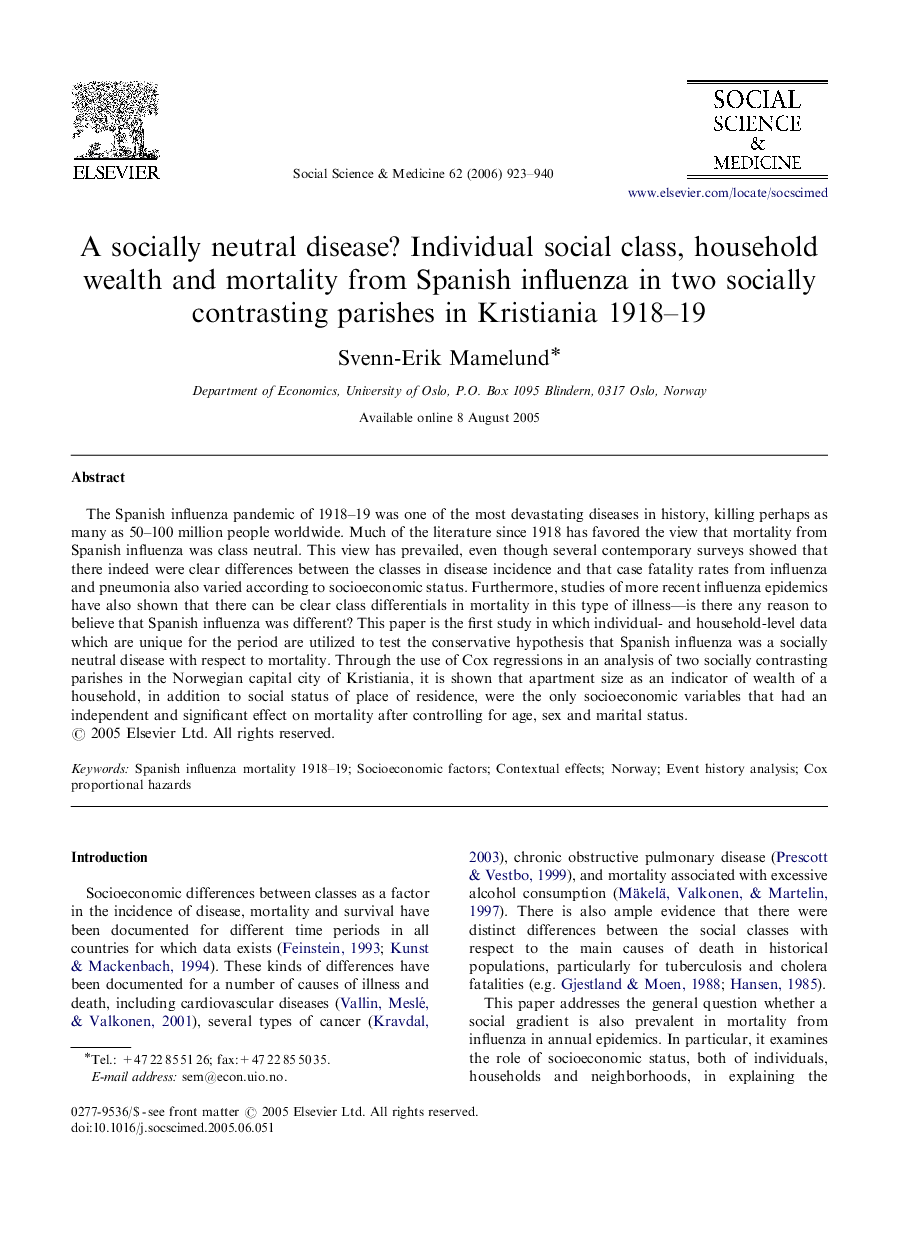| Article ID | Journal | Published Year | Pages | File Type |
|---|---|---|---|---|
| 955119 | Social Science & Medicine | 2006 | 18 Pages |
The Spanish influenza pandemic of 1918–19 was one of the most devastating diseases in history, killing perhaps as many as 50–100 million people worldwide. Much of the literature since 1918 has favored the view that mortality from Spanish influenza was class neutral. This view has prevailed, even though several contemporary surveys showed that there indeed were clear differences between the classes in disease incidence and that case fatality rates from influenza and pneumonia also varied according to socioeconomic status. Furthermore, studies of more recent influenza epidemics have also shown that there can be clear class differentials in mortality in this type of illness—is there any reason to believe that Spanish influenza was different? This paper is the first study in which individual- and household-level data which are unique for the period are utilized to test the conservative hypothesis that Spanish influenza was a socially neutral disease with respect to mortality. Through the use of Cox regressions in an analysis of two socially contrasting parishes in the Norwegian capital city of Kristiania, it is shown that apartment size as an indicator of wealth of a household, in addition to social status of place of residence, were the only socioeconomic variables that had an independent and significant effect on mortality after controlling for age, sex and marital status.
